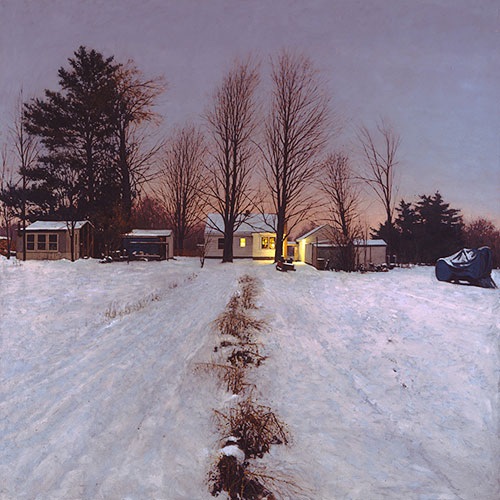BYON

Thanksgiving Day, Linden Frederick
I discovered Linden Frederick only last year, on a visit to Forum Gallery, where they are especially proud to represent him, judging by the conversation I had there. It’s impossible not to love his work, as precise as any photorealist’s but full of humble, wistful emotion about human life, unlike so much of the strangely cold hyper-realism that prevails in the commercial art world. It’s no wonder that he’s the darling of writers as diverse as Ann Patchett and Richard Russo (Frederick’s world looks like an exhaustive slide show of homes and hangouts in one of Russo’s towns). The Center for Maine Contemporary Art has a show up now, a sort of team effort among all Frederick’s literati fans, where they have brought their own narratives to the paintings he’s done, fabricating stories around his still images. It’s a fabulous idea for a show, which I would have named Bring Your Own Narrative. Here’s the esteemed roster:
Anthony Doerr (All the Light We Cannot See)
Andre Dubus III (House of Sand and Fog)
Louise Erdrich (The Round House)
Joshua Ferris (Then We Came to the End)
Tess Gerritsen (Rizzoli & Isles series)
Lawrence Kasdan (Raiders of the Lost Ark)
Lily King (Euphoria)
Dennis Lehane (Mystic River, The Wire)
Lois Lowry (The Giver)
Ann Patchett (Bel Canto)
Luanne Rice (Crazy in Love)
Richard Russo (Empire Falls)
Elizabeth Strout (Olive Kitteridge)
Ted Tally (The Silence of the Lambs)
Daniel Woodrell (Winter’s Bone)
In clicking around Frederick’s site, I discovered you can order giclee prints of his work, for a few hundred dollars apiece. It’s heartening to see an accomplished, successful artist of his stature doing this, despite the long-standing prejudice against these prints in the art world–partly because many lesser galleries push them as if they were the equivalent of woodblocks, serigraphs or lithographs. They aren’t, but in my view, reproductions like these serve as a genuine way to connect with people who love the work but can’t afford the original. Offering reproductions on archival paper this way ought to become commonplace. In this economy, the people who would identify the most with the world Frederick depicts could hardly afford one of his actual paintings: there’s a sort of justice in making the next-best-thing available to at least some of them. Real recognize real, as they say.
Comments are currently closed.